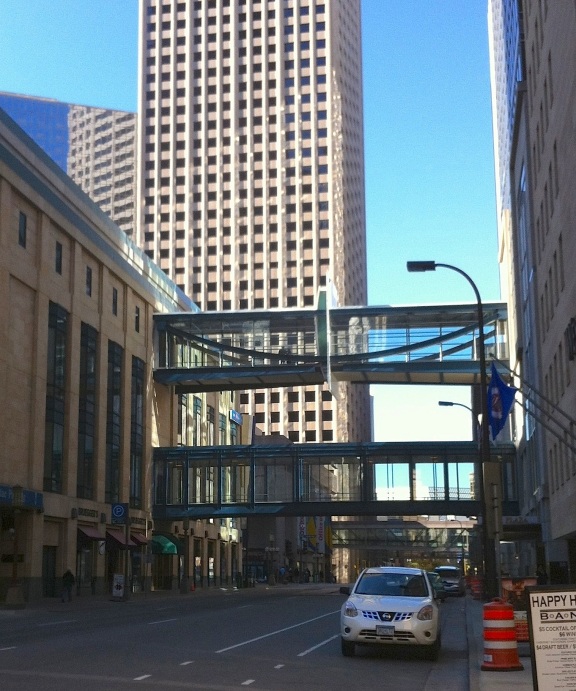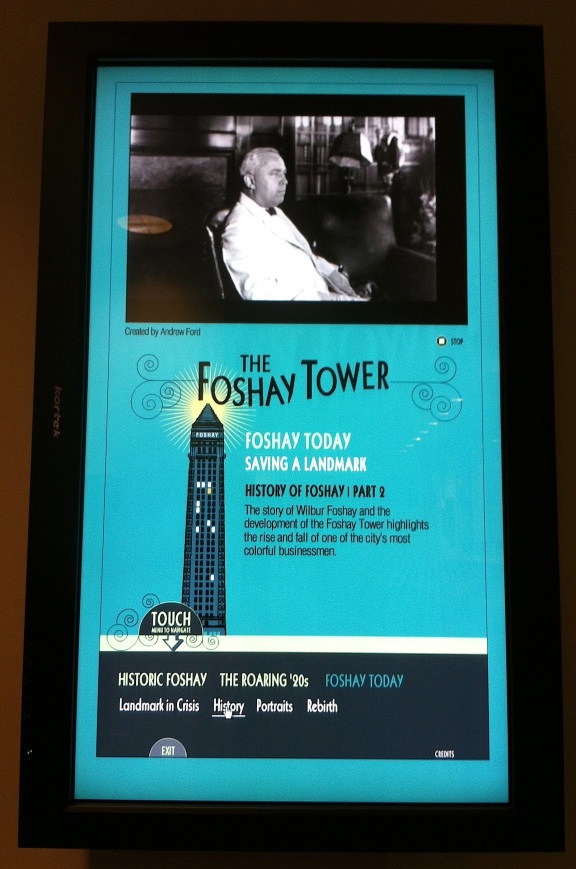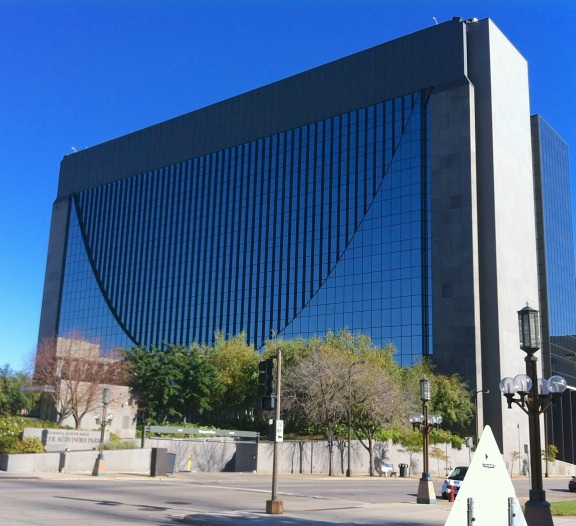Every culture has characteristics that make it unique from others. Germans are notorious for being so direct and honest that often times they border on harsh, whereas Indians are raised to be so collaborative and accommodating that at times their refusal to make a clear choice can be crippling. Canadians are known for being mellow, Brazilians for being festive, Irish for being feisty, Italians for being passionate… and we Americans, we’re known for our culture of “-est”.
The United States promotes a culture of competition. Capitalistic, individualistic, and materialistic, to “succeed” in America is to have the biggest, loudest, flashiest, richest, best thing possible. To be the smartest, fastest, sexiest, liveliest – these are the traits of admired people in the US. So it’s no surprise that most businesses, cities, schools, and governments fall into this trend, and the people who comprise each group strive to make their organization the stand-out in their desired pursuit of –est.
For many years, the Foshay Tower boasted many attributes of –est. It is one of the most unique skyscrapers on the planet, being the only building in the world modeled after the Washington Monument. It was also the first skyscraper built west of the Mississippi River – and at the time of construction, was one of the glitziest buildings around. For 42 years the Foshay also enjoyed the distinction of being the tallest building in the state of Minnesota (the IDS now stands as the highest human-constructed structure in the state), and the Foshay remains home to the only open-air observation deck in the Minneapolis/St. Paul area. By 21st-century standards, the Foshay is more ordinary than outstanding; but for many years it was a genuine city jewel.
Despite having worked in downtown Minneapolis for my entire adult professional career (over 16 years now), I have never taken time to explore the Foshay tower. But this Sunday, I found myself with a few open hours in my schedule – so I took advantage of one of the last beautiful days of fall and made my way to the Foshay.
The weather was gorgeous for late October. The temperature was in the mid 50s (F), the sun shone high and bright, the wind was exceedingly gentle, the trees displayed fantastic fall colors, and there were zero clouds in the vibrantly blue sky. Gorgeous!

The weather was so good that I chose to walk the 8 blocks outdoors instead of using the city skyway system. (Fun fact: The skyscraper in the background of this photo is the office building I work in. My desk is on the 35th floor.) 🙂
After a very enjoyable 20-minute stroll, I found myself outside the Foshay:
The Foshay museum is on the 30th floor of the building; but to access the gallery, I first had to purchase a ticket at the main desk on the 1st floor – which means I had to navigate the oh-we’re-so-sexy vibe of the W Hotel lobby. (The W Hotel purchased the Foshay building several years ago and did a great job of restoring it from its formerly crumbling state – so kudos to them for that. But man, it saddens and exhausts me to spend time in the aren’t-we-just-uuber-cool setting that the W so desperately tries to cultivate.)
After I purchased a ticket to the museum, I rode the elevator (“Lift #4, madam”) to the 30th floor, where I was greeted by a semi-bored-looking man sitting alone at a small desk. I handed him my paper stub, to which he smiled slightly said, “Welcome. The museum is to your left, the observation deck is up the stairs to your right. If you have any questions, please let me know.” As I looked to my left, the immediate question that came to my mind was, “Um, where is the museum?” All I saw was a small glass case and a few pictures hung on the wall – please don’t tell me that this is the extent of the “museum”? Please tell me that I didn’t pay $8 to experience this?
As I approached the end of the small hall that held the glass case, I found myself standing in front of a rather large wall-mounted kiosk. A message on the bottom left corner of the screen read, “Touch Here To Navigate” – so I did.
And I’m glad I did – because for the next 30 minutes I was treated to a variety of stories and images about the Foshay building, some intriguing sights and scenes from the 1920s, and some interesting present-day tales. You also might be glad that I decided to touch the screen – because I took a host of pictures from the images shown to me, and I’m going to share them with you, here and now. 🙂
(A note: The following series of pictures were taken from:
1) moving videos,
2) in a dimly-lit room,
3) semi-covertly.
So, the ‘quality’ of some of the pictures might not be fantastic. Please do your best to look past the visual flaws, and instead see the content that each image tries to deliver. Thank you for being understanding.) 🙂
(A second note: Should you want to stop any part of the following slide shows in order to spend more time looking at a picture [or reading a caption], you can do so by hovering your mouse over the image, then clicking on the middle “pause” button. When you’re ready to resume, click the middle button again – the photos will advance automatically.)
The first part of the interactive experience was kind of ‘light’; basically, it set the stage for the remaining video sections. Part 1 focused on some cultural elements that influenced the early days of the Foshay:
Interest picked up in Part 2: this second section of the online information focused on the 1920s, and particularly the social environment of Minnesota during those “golden years”. While I found the text somewhat sparse, the images shared were plentiful – and quite fascinating to me:
However, one thing I did find somewhat bizarre in this educational section was a focus on a garment called “Kickernicks”. The video display showed at least 40 images of this product, touting the benefits of it, and literally showing all of the ways this article of clothing could support active wear. If anyone has any insight into why Kickernics were so historically important, please do clue me in. For now, here is a small sampling of some of the content shared in the video:
Wrapping up the historical part of the educational experience, the kiosk showed a few newsreels and cartoons from the 1902s. These snippets were kind of fun to watch; I can understand why adults and kids used to spend entire afternoons at the movies back in the day…
The last part of the video tutorial merged the historical Foshay with the present building. In addition to learning about rather interesting architecture, I also got a bit of insight into some scandal…
First up: images of the original Foshay architecture and interior.
Next: Mr. Foshay – and his scandal.
The brief version of the story is that Mr. Foshay was a very outgoing big-city guy from New York who moved to Minneapolis and became very successful in the utilities business. He flaunted his wealth with much flair and vigor throughout the 1920s. But. When the stock market crashed in 1929 he lost his entire wealth; to further add to his issues, two years later Foshay was indicted on various counts of sneakily stealing money from honest citizens (through a mail fraud Ponzi scheme. Oy.). Foshay was found guilty, and was sentenced to time at Leavenworth penitentiary. He served three years before being pardoned by President Roosevelt. (The video didn’t say why Foshay was pardoned.) After being released from prison Foshay moved to Colorado to try and re-make himself – but from what I can gather, it sounds like he wasn’t overly successful.
Similar to the legacy of Foshay the man, Foshay the building fell apart as well (the result of decades of neglect during the mid 20th century). But. In the early 2000s, a group of investors decided to attempt to revitalize the Foshay building:
Which brought me back to the present. When I finished watching the last video offered by the kiosk, I took a slow stroll around the rest of the “museum”. Even moving with deliberate languor, I saw every image and artifact housed in the small space in less than 10 minutes. Here are the items I found most interesting:
Having exhausted the interior options of the museum, it was time to climb a few stairs and walk outside to see the sights offered by the 360-degree observation deck. Here are views of the city from 30 flights up:
(I will admit that when I looked at each of these buildings, I had little idea what most of them were. So when I returned home I performed some online research – and I want to give big thanks to John Weeks for his awesome Minneapolis Skyline photo. Super helpful!)
I thought the sights offered by the observation deck were nice; but to me, they were nothing super-special. Now, please take note that I work on the 35th floor of a downtown skyscraper, so I see similar views literally every day that I’m in the office. I’m confident that for some people who don’t have such a privileged workplace view, the Foshay observation deck provides amazing scenes. However, for me, the views were “fine”, but nothing super-crazy-outlandishly awesome.
That being said, one thing I did get to experience on the observation deck that I don’t usually have the opportunity to encounter was the feeling of being high above the city, fully exposed. (And no, not “exposed” in that way [get your mind out of the gutter]; ‘exposed’ as in nothing standing between me and the ground below.) No thick plate glass windows to block the outdoor air, no cement walls to provide a familiar feeling of being indoors – just my body and the open space around me. Indeed, as I reached my arms beyond the metal safety bars to try and capture a few “cool” photographs, the dominant thought running through my mind was please-don’t-let-me-drop-my-phone…please-don’t-let-me-drop-my-phone…please-don’t-let-me-drop-my-phone…please-don’t-let-me-drop-my-phone…please-don’t-let-me-drop-my-phone…
After finishing snapping photos and successfully placing my still-intact-phone safely in my pocket, I stuck my head through the guard rails and experienced a few seconds of what it might feel like to stand on the very edge of a skyscraper. For me, it was a very unpleasant cluster of sensations. Even though intellectually I “knew” that I was totally safe and that nothing bad could possibly happen to me, my eyes told my reptilian brain that my life was in danger – and that oldest part of my cerebellum reacted accordingly. Immediately my breathing turned shallow, my heart raced, my stomach clenched, and my muscles yearned to pull away from the ledge. I stayed with my head extended beyond the tower’s ledge for about five seconds – then I couldn’t bear the physical discomfort any longer, and allowed my body to pull my back towards the “safety” of the building.
However, in those few seconds of looking down at the tiny streets below, my thinking mind contemplated a whole host of items. I thought about people who scale buildings like this one on a regular basis (i.e., construction workers, window washers, repair people…) and I wondered how they could desensitize themselves so much that they could find their work bearable (and perhaps even enjoyable?). I then thought about people who stand on the edge of a building trying to decide between the lesser of two painful ends (i.e., people caught in a building fire, the workers trapped in the World Trade Center towers on 9/11/01), and I grimaced in sympathy for the completely unfair “choice” all of those individuals had to suffer through. Finally, my mind turned towards people who ‘voluntarily’ stand on a ledge (i.e., individuals looking to end their lives via suicide), and my heart filled with both pain and compassion for those humans; what intense torment they must be suffering with if jumping seems like a better option than continuing on with life…
Sigh. Who knew such a banal outing like “visit a dinky building museum” would take such a deep turn? Yet such is often the case in my life – I just never know what insights, lessons, and learnings I might find at any turn…
I guess the upside to this dark chain of reflection is that when I came face-to-face with a premature end, my instinct was not to lean in closer to death, but to pull back and run towards life. I’m not ready to go just yet – and it’s a splendid feeling to stretch my arms out to my unknown future, and to feel her hugging me back.
Having had my fill of the observation deck, I walked back inside the tower, down the small set of stairs, through the tiny museum, past the ticket-taker, onto lift #4, down 30 floors, through the hotel lobby, and back outside to the stunning fall day. Once back on the street, I breathed in a deep lungful of the crisp fall air, and turned my face up to meet the brilliant sun shining down on me. I walked 8 blocks back to my car – and on my route, I saw a building smile at me:
Stef







Excellent. You had my emotions on a roller coaster wanting more. Your photos were excellent. I think I would like to purchase a pair of those Kickernicks you were talking about 🙂
LikeLike
Thank you so much for your very complimentary comments, Beverly! I think to say to a writer, “You had me wanting more,” is the highest praise you can share with them. I’m very flattered!
I bet you’d look great in a pair of Kickernicks. 🙂
LikeLike
You always know how to make me smile 🙂 You are a very talented writer and never forget that!
LikeLike
Aw, thank you so much! Your compliments truly mean a lot to me. Thank you sincerely for your encouragement – big hug to you!
LikeLike
Back at ya 🙂
LikeLike